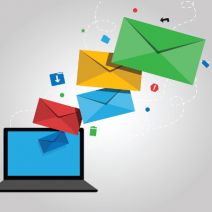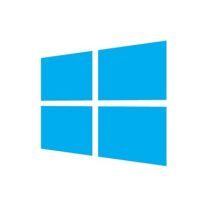If your business uses Gmail as its preferred email client, then you know that it’s a great way to keep communications running smoothly. Sometimes, however, a message might fall through the cracks, and you’ll need to locate it in order to acquire certain information. Gmail has made it easy to locate lost messages with their search feature.
Computerware Blog
Computerware has been serving the Vienna area since 1976, providing IT Support such as technical helpdesk support, computer support, and consulting to small and medium-sized businesses.
0 Comments
Now that the cloud has become an affordable and versatile part of the business environment, more organizations than ever are moving to take advantage of it as much as possible. However, for the folks who are new to cloud computing, you might want to hold your horses and take a look at how you can prepare to move your business to the cloud. Doing so can alleviate some of the challenges that come from overhauling your IT infrastructure.
YouTube has been a monstrous hit for Internet video enthusiasts ever since its creation, but just recently, it was announced that YouTube now has a premium service called YouTube Red. Now you can watch viral videos and other great entertainment flicks in a whole new way. Still, this change has some people concerned over what it means for their current YouTube watching habits. What do you get with a YouTube Red subscription, anyway?
If you’ve been a computer user for some time, there is a distinct possibility that you have more than one email account. At the very least you have your home address, and it’s increasingly likely that your college, your place of employment, your ISP, or some other organization has issued some sort of email address. There is now a way to combine these accounts into a single email address of your choice.
The hype train keeps chugging along for Windows 10, and it’s obvious why. It’s a great operating system that’s changing the way that businesses handle their daily tasks. But is Windows 10 doing as well as it lets on? According to desktop operating system usage statistics from NetMarketShare, Windows 10’s adoption rate has significantly slowed down in recent months, while more people continue to take advantage of Windows 7 and 8.x. Why?
Technology is everywhere. Coincidentally, that is exactly where every political candidate wants to be. With the 24/7 news cycle and social media leading the charge, technology has become one of the most important aspects of election season. The lead-up to any election is a tense time for the candidates, and for their supporters. With public arguments being had about different philosophies, ideologies, and platforms, it’s important to understand how today’s candidates handle technology while on the campaign trail.
It’s a known fact that social media is a great asset for the modern business owner to leverage, but you wouldn’t believe how often it’s misconstrued as a waste of time. In fact, social media outlets like Facebook, Twitter, LinkedIn, and even YouTube, are so commonplace nowadays in the business world that your organization could fall behind others that properly utilize them. Facebook, in particular, is a powerful tool that can be used for online networking purposes.
Eventually, one technology gets replaced by another and users of the older technology must upgrade, or else risk running an inefficient operation. This upgrade-or-be-obsolete scenario plays out most often with software, like with SHA1, the Internet’s most popular encryption protocol, slated to have its SSL certificates expire on January 1, 2017.
Organizations are taking to the skies with cloud computing solutions in the workplace, and it’s proving to be a valuable investment. However, such unprecedented growth doesn’t come without its fair share of risks. How does the cloud affect your business’s ability to function without unknowingly compromising your data infrastructure, or risking heavy downtime?
Thanks to so many people carrying camera-equipped smartphones, our society is inundated with photos like never before. For many of us, sharing and posting pictures has become second nature. Although, not everyone is aware of just how large the file size of pictures can potentially be, and why large photos can be problematic.
Professional sports have a unique relationship with technology. On one hand, the games are steeped in tradition and one doesn’t make a change to the rules without risking a fan uproar. However, the latest technology has always been a part of the sporting world, enhancing the fan experience and changing things for the better. The National Football League provides us with a great example of this dynamic.
Phishing attacks grow more common every day, particularly because it’s so challenging to know who’s for real and who’s a fake on the Internet. The anonymity of the Internet has fostered an environment where hackers can extort money with little fear of getting caught, under the right circumstances. How can you protect yourself and your business from being targeted by phishing attacks?
ATMs are probably everyone’s favorite kind of computer. You swipe your card, enter in your PIN, and withdraw cash immediately. Many people forget that an ATM is simply a computer in disguise, though; one that can be infected with malware just as easily as any old PC can. A new type of ATM malware, GreenDispenser, is making its rounds in Mexico, and could potentially make its way to other countries if left unchecked.
It was a dark and stormy night, as it sometimes is on Halloween. It’s a time when kids and adults alike enjoy dressing up as scary monsters and partaking in some good old-fashioned trick-or-treating. You’re pulling a late night at the office, and you hear a sound emanating from your server room; an unsavory clicking sound that echoes through the recesses of your office. What do you do?
Microsoft and Apple have been going at it for decades. Not only have these two tech monsters been at it in the lab, they’ve been each other’s prime competition throughout the advents of the personal computer, the graphic user interface, and the smartphone. Today they continue to make devices that deliberately (or not) seem more like counterpunches to the other than pure innovation.
Most devices that are being produced these days are aiming for the “connectivity” angle, be it simply connecting to the Internet, or allowing you to stay connected to something specific through the cloud. While this does wonders for productivity and online interaction, some users approach these devices without considering the state of online security. October is Cybersecurity Month, so there’s no time like the present to ask yourself how trends in Internet of Things security can affect your organization.
Malware and viruses are so common nowadays in the technology world that it’s no surprise when new ones are created. Thus, it should come as no surprise that hackers are looking to spread smartphone malware to unsuspecting users around the world. Kemoge, a new malicious adware for the Android mobile operating system, has spread to 20 countries, and is taking the mobile device world by storm.




















